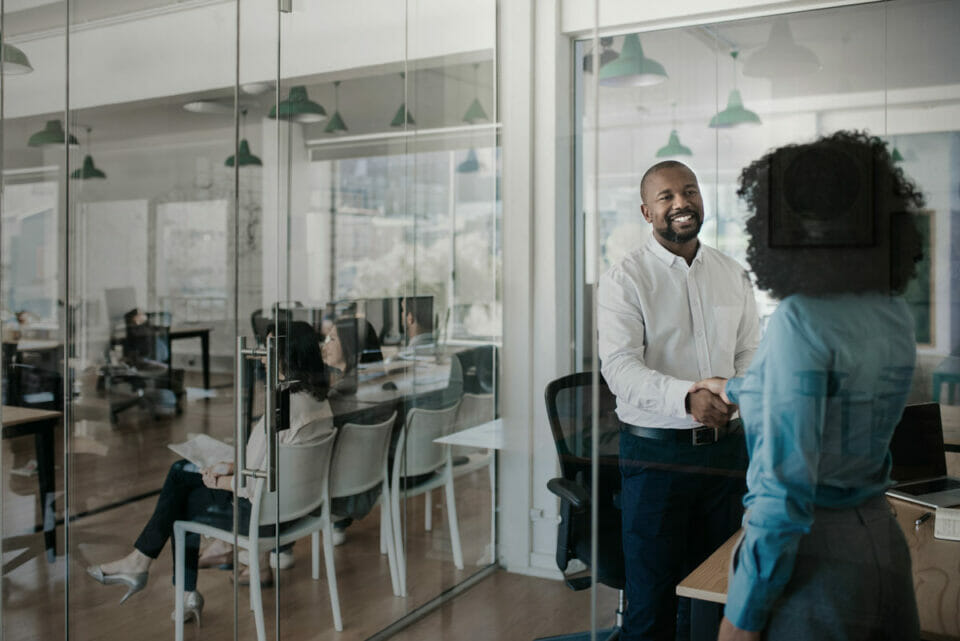
OSHA Logs Are Due: Don’t Make These 5 Costly Mistakes | Risk Matrix Episode 123
THE RISK MATRIX Cutting-edge podcast on occupational safety and risk management. Hosted by industry titans: JAMES JUNKIN, MS, CSP, MSP,…
Safety leading indicators are proactive measures that quantify prevention efforts and can be observed and recorded before an injury happens. Whereas lagging indicators are reactive; they only track negative outcomes, like noting an injury once it’s happened.

In recent years, skilled workforce availability has moved to center stage as a top issue for the trades.
Finding well-trained, motivated workers that are the right fit for an organization in today’s job market is a struggle. The importance of providing a level of comfort with the type and scope of work that a new worker will be asked to perform is critically important. And you need to ensure new workers know you take their orientation, onboarding, mentoring, ideas, and concerns as seriously as anyone else in your organization – even top management.
![]()
In a tight job market, “new” workers or workers displaced from other industries have their pick among many opportunities, so the overall “value proposition” of selecting YOUR company is essential.
Rule #1 for worker recruitment is to be up-front and honest in the job description. In addition, consider focusing on any unique opportunities or training as well as your workplace benefits and rewards – especially rewards that stand out from the competition. But being realistic and positive about the overall organizational benefits is only one part of the recruitment equation.
When “new” workers have choices, they will often choose work with higher pay and where the potential for harm to them on the job is low. In this case, your workplace safety onboarding, organization safety climate, historical safety records, and on-the-job hands-on training and mentoring programs can have a powerful influence over your ability to attract and retain new skilled workers.
![]()
Most companies have orientation and onboarding policies and procedures in place to help prepare and train new workers. These two processes – orientation and onboarding – are two separate and distinct processes.
Employee orientation is a general introduction to your workplace and organization. Orientations can be completed in less than a day and are similar for every employee. Employers should take workplace orientation time to assist new workers in completing necessary paperwork, provide access to all required company resources and technology, and learn about essential company programs, policies, and procedures.
Worker onboarding is generally a much more comprehensive process where new employees are assisted by the company with transition into their job roles, and to become part of their work team organization. Good onboarding programs can last up to 12 months and, in the most successful circumstances for worker retention and safety, include mentoring programs. The purpose of onboarding is to help build worker confidence in their job tasks and roles.
Think of new employee orientation as a practical, informational program, and worker onboarding as preparing the worker for a safe and long tenure working for your company.
![]()
On-the-job training (or mentoring) is a critical asset in every new worker’s learning process. Peer-to-peer mentoring can be one of your greatest strengths in training new workers. It utilizes trusted employees to monitor, develop, and critique job-critical skills and instill positive safety attitudes aligned with an organization’s overall safety climate and programs.
Mentors can focus efforts on skills that align with successful company safety, productivity, and quality expectations in their training period, while simultaneously helping the company monitor worker behaviors and conditions for immediate discussion and correction.
![]()
Internships, trade schools, and vocational training programs teach new and/or transitioning workers and high school students, job skills needed for specific occupations as they complete their academic coursework. These programs can prepare valuable new workers for careers in fields such as high-hazard industries with added beneficial outcomes such as increased high school completion, employment, and earnings.
These learning opportunities are also effective at including safety awareness and best practices in the curriculum. This results in well-prepared and trained new workers being ready to fit seamlessly into organizations that champion safety, hazard identification, and reduction of worker risk as core values.
Many of these programs result in graduates becoming safety leaders the moment they step on the job site or into a facility, holding safety qualifications such as OSHA 10- and 30-hour certificates, baseline safety certifications, and specialized safety training certificates and knowledge.
![]()
Workforce job retraining is one of the ways workers can reenter the workforce into new roles in safe and effective ways. Retraining means to train in a new subject, for a new job, often at a new company or organization, where learning and development play a critical, primary role in training workers that are new to any industry.
Workforce retraining can mean the difference between costly injuries or fatalities as these workers transition from less-risky jobs to those requiring highly technical skills to keep themselves and others safe. Industries such as oil and gas, construction, energy, utilities, and manufacturing have a high level of both physical and financial risk to workers and organizations. Rigorous workforce retraining is one of the best ways to mitigate those risks.
![]()
Sometimes the difference between attracting the right workers comes down to the development and proven record of implementing good health and safety practices within an organization. Creating empowerment comes from implementing policies and procedures, and fostering trust, that all workers are capable of enacting practices that improve the safety of a workplace for employees.
Championing “stop work” when unsafe practices or conditions are observed, implementing risk assessments, performing safety audits, and implementing regular workspace inspections should be a collaborative approach from the top all the way to the worker level.
When incidents or near misses happen the focus of the resulting investigation(s) that take place should avoid the “blame the worker” approach and aim solidly at identifying and correcting underlying root causes. That way, these incidents do not happen again, and workers can feel safe performing their everyday assigned tasks.
![]()
It is one thing to empower workers, but workers also need to feel that the safety professionals and collective safety department “have the back of the workers” at all times. Safety professionals need to transition from “drive-by” and “flyovers” at work sites and facilities and spend time where the work happens, asking questions and understanding the issues and hazards the workers face every day.
Safety underlies everything that workers are expected to accomplish, and the company and the safety department are right there with them to help get the job done safely, productively, and with quality, while no one gets hurt.


THE RISK MATRIX Cutting-edge podcast on occupational safety and risk management. Hosted by industry titans: JAMES JUNKIN, MS, CSP, MSP,…

THE RISK MATRIX Cutting-edge podcast on occupational safety and risk management. Hosted by industry titans: JAMES JUNKIN, MS, CSP, MSP,…
We’ll send you practical and insightful supply chain risk management info that can benefit your business. Plus, important company updates that keep you in the loop.
